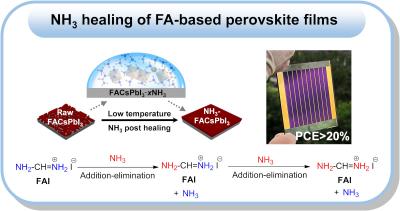Floating perovskite-based 'artificial leaves' generate clean fuels from sunlight and water
University of Cambridge scientists have developed perovskite-based floating ‘artificial leaves’ that generate clean fuels from sunlight and water. The team expects these could eventually operate on a large scale at sea. The ultra-thin flexible devices take their inspiration from photosynthesis. Since the low-cost, autonomous devices are light enough to float, they could be used to generate a sustainable alternative to gasoline without taking up space on land.
A floating artificial leaf which can generate clean fuel from sunlight and water – on the River Cam near King’s College Chapel in Cambridge, UK. Image credit: Virgil Andrei, from: Scitechdaily
Outdoor tests of the lightweight leaves on the River Cam showed that they can convert sunlight into fuels as efficiently as plant leaves. River Cam is the main river flowing through Cambridge in eastern England, and the testing occurred near iconic Cambridge sites including the Bridge of Sighs, the Wren Library, and King’s College Chapel.



